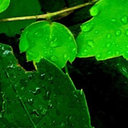Characterization, antioxidant and antitumor activities of polysaccharides from purple sweet potato.
Atslēgvārdi
Abstrakts
Three polysaccharides, PSPP1-1, PSPP2-1 and PSPP3-1, were isolated from purple sweet potato. The three polysaccharides belonged to β-type polysaccharides and contained low proportions of proteins and uronic acids. PSPP1-1 and PSPP3-1 with molecular weights of 33.3 and 75.3 kDa, respectively, were composed of rhamnose, xylose, glucose and galactose, whereas PSPP2-1 with molecular weight of 17.8 kDa was composed of rhamnose and galactose. The three polysaccharides possessed in vitro antioxidant (scavenging DPPH radicals, chelating ferrous ions and reducing power) and antitumor activities (against SGC7901 and SW620 cells) in a dose-dependent manner. Among the three polysaccharides, PSPP2-1 exhibited the strongest reducing power, scavenging activity on DPPH radicals and chelating capability on ferrous ions. PSPP1-1 showed the strongest inhibitory activities on the growth of SGC7901 and SW620 cells. In addition, flow cytometry results showed that PSPP1-1 could induce apoptosis in SGC7901 and SW620 cells. These results suggest that polysaccharides from purple sweet potato are potential natural antioxidant and antitumor agents that can be used as drugs or functional food ingredients.



